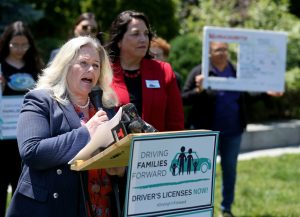
St. Paul City Council poised to double size of Downtown Improvement District
St. Paul’s Downtown Improvement District is poised to double in size, adding all of Lowertown and residential properties in an effort to fund more litter pick-up, graffiti removal, street greeters, bicycle patrols and other support services downtown.
The St. Paul City Council held a public hearing Wednesday on the proposed district expansion, which has been promoted by a coalition of businesses through the St. Paul Downtown Alliance and drew a long line of supporters to council chambers, including developers like Rich Pakonen and Sherman Associates. A final vote is likely next Wednesday.
“We really, really appreciate your engagement, and will rely on that in the months and years ahead,” said Joe Spencer, president of the Downtown Alliance, addressing the residents, property owners and business owners in the room.
Several supporters said they were downtown condo owners who had seen an uptick in homelessness downtown since the outset of the pandemic and felt that calling police was not always the right solution when problems occur.
“If it’s the way that it’s currently working, where people have been assisted with the support they need, that will be a huge help for the low income, both for residents and for the people who need help,” said Subir Chatterjee, a downtown resident who serves on the board of the Downtown Alliance.
Quality-of-life issues
Among potential initiatives, alliance members have even floated the idea of funding a community prosecutor in the city attorney’s office to focus on quality-of-life issues downtown, a proposal that appears to have received mixed reviews from City Hall.
Downtown Alliance members say that since the launch of the city’s Downtown Improvement District in 2021, quality-of-life calls to police have fallen by 40% within the district’s boundaries, even as they increased in other parts of downtown. When the DID launched, St. Paul was believed to be the largest city in the nation without a downtown improvement district.
“In our experience, the services provided by the downtown improvement district have (added to) a really positive perception of safety and vitality in the district,” said Alyssa Schlander, a senior director for public affairs with Securian Financial. “We believe that the program is a practical and effective way to supplement city services to ensure that appropriate attention is paid to our public environment in downtown.”
If the district expands as planned, its annual budget would grow from $1.3 million to about $2.75 million. St. Paul would pay in $439,000 and Ramsey County would pay in $243,000. The rest would be covered by the private sector.
The average annual payment for condo owners will be $65, according to organizers.
Objections
During Wednesday’s council meeting, longtime city resident Paul Pfeiffer objected to the prospect of potentially creating more interactions between law enforcement and the homeless.
“I’m disappointed by the lack of empathy displayed by both the council and the Downtown Alliance because expanding enforcement and prosecution … will likely impact one of our most vulnerable populations, who frequently have nowhere left to go,” Pfeiffer said.
Some property owners have balked at the prospect of adding new fees to support services they say the city could and should be providing anyway, like bike patrols. They’ve called the added costs detrimental to efforts to add more housing downtown.
An attorney for the property owners behind the U.S. Bank Center on Fifth Street, Alliance Center on 6th Street, the Degree of Honor building on Cedar Street, 375 Jackson Street and a dozen other downtown locations submitted a formal letter of objection last week to the city council.
Attorney Kelly Hadac noted the departure of storied St. Paul engineering firm TKDA from downtown, the recent decision by Lunds & Byerlys to reduce its hours and the decision of the U.S. Department of Veterans Affairs to leave U.S. Bank Center as evidence of downtown’s challenges.
“There is rampant homelessness and drug use. Restaurants have gone out of business,” Hadac wrote. “Businesses have gone bankrupt. Large buildings are vacant. … This is not a time to increase the financial demands upon the owners of real property in downtown St. Paul. … The property owners already pay millions in taxes.”
Raising the possibility of legal action, downtown building owner Dave Brooks called the DID expansion “a waste of money and energy (during) some very hard times for our city.”
“The building owners pick up their own trash, power wash the gum off the sidewalks, get rid of the graffiti, move along the homeless,” said Brooks, in a recent email. “If there is a problem there’s 10 cell phones that are calling the police. We supply that service. We don’t need to have the Downtown Alliance … tax (us) approximately $3 million.”
Addressing the council on Wednesday, Brooks expressed concern that burgeoning efforts to convert empty office buildings downtown into residences may be hampered by new fees.
“St. Paul right now is in a very delicate situation,” he wrote. “Buildings are empty. Plan is to try to get more housing in downtown St. Paul, but then they will be taxing the renters. … I think the Downtown Alliance has to step back, let the city heal a little bit for a couple years and see which way we’re going and revisit what needs to be done.”
Related Articles
St. Paul City Council will revisit East Grand Avenue overlay district on Aug. 7, with changes
It’s official: Construction of Pedro Park in downtown St. Paul is underway after 27 years of planning
St. Paul’s Grand Ave. could be rezoned from Ayd Mill Road to Oakland Ave.
A downtown St. Paul church opposes an 88-unit supportive housing facility by Dorothy Day Center
MN Court of Appeals demands new environmental review of St. Thomas arena

